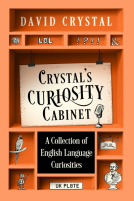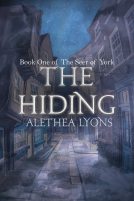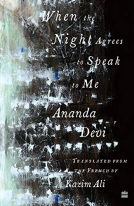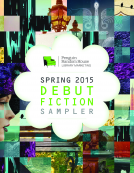
Theory at Yale
The Strange Case of Deconstruction in America
by Marc Redfield
This title was previously available on NetGalley and is now archived.
Buy on Amazon
Buy on BN.com
Buy on Bookshop.org
*This page contains affiliate links, so we may earn a small commission when you make a purchase through links on our site at no additional cost to you.
Send NetGalley books directly to your Kindle or Kindle app
1
To read on a Kindle or Kindle app, please add kindle@netgalley.com as an approved email address to receive files in your Amazon account. Click here for step-by-step instructions.
2
Also find your Kindle email address within your Amazon account, and enter it here.
Pub Date Nov 02 2015 | Archive Date Oct 01 2015
Description
This book examines the affinity between "theory" and "deconstruction" that developed in the American academy in the 1970s by way of the "Yale Critics": Harold Bloom, Paul de Man, Geoffrey Hartman, and J. Hillis Miller, sometimes joined by the French philosopher Jacques Derrida.
With this semi-fictional collective, theory became a media event, first in the academy and then in the wider print media, in and through its phantasmatic link with deconstruction and with "Yale." The important role played by aesthetic humanism in American pedagogical discourse provides a context for understanding theory as an aesthetic scandal, and an examination of the ways in which de Man's work challenges aesthetic pieties helps us understand why, by the 1980s, he above all had come to personify "theory."
Combining a broad account of the "Yale Critics" phenomenon with a series of careful re-examinations of the event of theory, Redfield traces the threat posed by language's unreliability and inhumanity in chapters on lyric, on Hartman's representation of the Wordsworthian imagination, on Bloom's early theory of influence in the 1970s together with his later media reinvention as the genius of the Western Canon, and on John Guillory's influential attempt to interpret de Manian theory as a symptom of literature's increasing marginality. A final chapter examines Mark Tansey's paintings "Derrida Queries de Man" and "Constructing the Grand Canyon", works that offer subtle, complex reflections on the peculiar event of theory as-deconstruction in America.
With this semi-fictional collective, theory became a media event, first in the academy and then in the wider print media, in and through its phantasmatic link with deconstruction and with "Yale." The important role played by aesthetic humanism in American pedagogical discourse provides a context for understanding theory as an aesthetic scandal, and an examination of the ways in which de Man's work challenges aesthetic pieties helps us understand why, by the 1980s, he above all had come to personify "theory."
Combining a broad account of the "Yale Critics" phenomenon with a series of careful re-examinations of the event of theory, Redfield traces the threat posed by language's unreliability and inhumanity in chapters on lyric, on Hartman's representation of the Wordsworthian imagination, on Bloom's early theory of influence in the 1970s together with his later media reinvention as the genius of the Western Canon, and on John Guillory's influential attempt to interpret de Manian theory as a symptom of literature's increasing marginality. A final chapter examines Mark Tansey's paintings "Derrida Queries de Man" and "Constructing the Grand Canyon", works that offer subtle, complex reflections on the peculiar event of theory as-deconstruction in America.
Advance Praise
“This is the most informative and accurate book I have read, or ever expect to read, on the ‘Yale Critics’ phenomenon. It’s completely free of both the bad faith and the idolatry that plague any and all other accounts.”—Paul Fry, Yale University
“Was the Yale School a media creation? Marc Redfield here offers us both a shrewd account of the quite different contributions of Geoffrey Hartman, Harold Bloom, and Paul de Man to literary studies, and a smart, subtle, analysis of the myth of the ‘Yale School’ and its fortunes in the culture wars. An invigorating retrospective on an important chapter in American intellectual history which is not yet over.”
—Jonathan Culler, Cornell University
“Was the Yale School a media creation? Marc Redfield here offers us both a shrewd account of the quite different contributions of Geoffrey Hartman, Harold Bloom, and Paul de Man to literary studies, and a smart, subtle, analysis of the myth of the ‘Yale School’ and its fortunes in the culture wars. An invigorating retrospective on an important chapter in American intellectual history which is not yet over.”
—Jonathan Culler, Cornell University
Available Editions
| EDITION | Other Format |
| ISBN | 9780823268672 |
| PRICE | $29.95 (USD) |
Links
Average rating from 4 members
Readers who liked this book also liked:
George Orwell's Animal Farm
Jakub Politzer (Illustrator), Christina Dumalasova (adapter), Katerina Horakova (adapter)
Comics, Graphic Novels, Manga, General Fiction (Adult)
Jakub Politzer (Illustrator), Christina Dumalasova (adapter), Katerina Horakova (adapter)
Comics, Graphic Novels, Manga, General Fiction (Adult)














